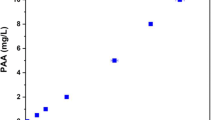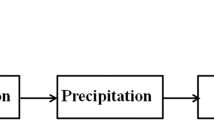Abstract
Quenching agents (QAs) are widely used in order to prevent the additional formation of disinfection by-products (DBPs) during the sample holding time. In addition, DBP levels are usually stabilized by adjusting the pH of water samples. Previous studies have mostly focused on the individual effects of QAs or of pH on the stability of DBPs in water samples. Considering that disinfectant quenching and pH adjustments are applied simultaneously during routine analyses, it is more appropriate to evaluate the stability of DBPs with all the chemicals (e.g., disinfectants, QAs, buffers) present in the water. This study investigated the synergistic effects of different QAs (ascorbic acid, ammonium chloride, or no quenching) and pH adjustment (3–9) strategies on the stability of different classes of DBPs (i.e., trihalomethanes (THMs), halogenated acetaldehydes (HALs), haloacetonitriles (HANs), haloketones (HKs), and halonitromethane (HNM)). Sample preservation conditions that did not include a QA were shown to be inadequate for GC-ECD analysis, due to interference problems. Ammonium chloride was found to be effective for most DBPs. However, some HALs continued to form in the presence of chloramine, which is a by-product of dechlorination using ammonium chloride. Conversely, using ascorbic acid efficiently inactivated residual chlorine, providing a clean chromatographic baseline. Based on the results of this study, we recommend the use of ascorbic acid for quenching and sulfuric acid for acidifying (pH 3.5) samples. Considering the instability of some DBPs in water matrices over long periods (i.e., 14 days), samples should be processed as soon as possible after collection.





Similar content being viewed by others
Abbreviations
- BCAL:
-
Bromochloroacetaldehyde
- BCAN:
-
Bromochloroacetonitrile
- BDCAL:
-
Bromodichloroacetaldehyde
- BDCM:
-
Bromodichloromethane
- CH:
-
Chloral hydrate
- DBAN:
-
Dibromoacetonitrile
- DBP:
-
Disinfection by-product
- DBAL:
-
Dibromoacetaldehyde
- DBCAL:
-
Dibromochloroacetaldehyde
- DBCM:
-
Dibromochloromethane
- DCAL:
-
Dichloroacetaldehyde
- DCAN:
-
Dichloroacetonitrile
- DHALs:
-
Dihalogenated acetaldehydes
- 11DCP:
-
1,1-Dichloro-2-propanone
- ECD:
-
Electron capture detector
- GC:
-
Gas chromatography
- HALs:
-
Halogenated acetaldehydes
- HANs:
-
Haloacetonitriles
- HKs:
-
Haloketones
- HNM:
-
Halonitromethane
- HPLC:
-
High-performance liquid chromatography
- IS:
-
Internal standard
- MTBE:
-
Methyl tert-butyl ether
- RSD:
-
Relative standard deviation
- SS:
-
Surrogate standard
- SWM:
-
Simulated water matrix
- TBAL:
-
Tribromoacetaldehyde
- TBM:
-
Tribromomethane
- TCAL:
-
Trichloroacetaldehyde
- TCAN:
-
Trichloroacetonitrile
- TCNM:
-
Trichloronitromethane
- THALs:
-
Trihalogenated acetaldehydes
- 111TCP:
-
1,1,1-Trichloro-2-propanone
- THMs:
-
Trihalomethanes
- USEPA:
-
United States Environmental Protection Agency
References
Allen, J. M., Cuthbertson, A. A., Liberatore, H. K., Kimura, S. Y., Mantha, A., Edwards, M. A., et al. (2017). Showering in Flint, MI: Is there a DBP problem? Journal of Environmental Sciences (China), 58, 271–284. https://doi.org/10.1016/j.jes.2017.06.009.
Bond, T., Henriet, O., Goslan, E. H., Parsons, S. A., & Jefferson, B. (2009). Disinfection byproduct formation and fractionation behavior of natural organic matter surrogates. Environmental Science & Technology, 43(15), 5982–5989. https://doi.org/10.1021/es900686p.
Chen, B. (2011). Hydrolytic stabilities of halogenated disinfection byproducts: Review and rate constant quantitative structure–property relationship analysis. Environmental Engineering Science, 28(6), 385–394. https://doi.org/10.1089/ees.2010.0196.
Chinn, R., Lee, T., Krasner, S., Dale, M., Richardson, S., Pressman, J., et al. (2007). Solid-phase extraction of 35 DBPs with analysis by GC/ECD and GC/MS. In Proceedings of the 2007 Water Quality Conference (pp. 1–20).
Chu, W. H., Gao, N. Y., Deng, Y., & Dong, B. Z. (2009). Formation of chloroform during chlorination of alanine in drinking water. [article]. Chemosphere, 77(10), 1346–1351. https://doi.org/10.1016/j.chemosphere.2009.09.030.
de Laat, J., Merlet, N., & Dore, M. (1982). Chloration de composés organiques: demande en chlore et réactivite vis-a-vis de la formation des trihalométhanes. Incidence de l'azote ammoniacal. Water Research, 16(10), 1437–1450. https://doi.org/10.1016/0043-1354(82)90242-1.
Delinsky, A. D., Bruckner, J. V., & Bartlett, M. G. (2005). A review of analytical methods for the determination of trichloroethylene and its major metabolites chloral hydrate, trichloroacetic acid and dichloroacetic acid. Biomedical Chromatography, 19(8), 617–639. https://doi.org/10.1002/bmc.488.
EPA. (1995). Method 551.1: Determination of chlorination disinfection byproducts, chlorinated solvents, and halogenated pesticides/herbicides in drinking water by liquid-liquid extraction and gas chromatography with electron-capture detection (Revision 1.0).
Glezer, V., Harris, B., Tal, N., Iosefzon, B., & Lev, O. (1999). Hydrolysis of haloacetonitriles: Linear free energy relationship, kinetics and products. [article]. Water Research, 33(8), 1938–1948. https://doi.org/10.1016/s0043-1354(98)00361-3.
Guanghui, H., & David, A. R. (2012). Effect of alkaline pH on the stability of halogenated DBPs. Journal (American Water Works Association), 104(2), E107–E120.
Jeong, C. H., Postigo, C., Richardson, S. D., Simmons, J. E., Kimura, S. Y., Marinas, B. J., et al. (2015). Occurrence and comparative toxicity of haloacetaldehyde disinfection byproducts in drinking water. Environmental Science & Technology, 49(23), 13749–13759. https://doi.org/10.1021/es506358x.
Kinani, A., Kinani, S., & Bouchonnet, S. (2016). Formation and determination of organohalogen by-products in water – Part II. Sample preparation techniques for analytical approaches. TrAC Trends in Analytical Chemistry, 85, 281–294. https://doi.org/10.1016/j.trac.2016.07.006.
Koudjonou, B. K., & LeBel, G. L. (2006). Halogenated acetaldehydes: Analysis, stability and fate in drinking water. Chemosphere, 64(5), 795–802. https://doi.org/10.1016/j.chemosphere.2005.10.063.
Krasner, S. W. (2009). The formation and control of emerging disinfection by-products of health concern. [review]. Philosophical Transactions of the Royal Society a-Mathematical Physical and Engineering Sciences, 367(1904), 4077–4095. https://doi.org/10.1098/rsta.2009.0108.
Kristiana, I., Lethorn, A., Joll, C., & Heitz, A. (2014). To add or not to add: The use of quenching agents for the analysis of disinfection by-products in water samples. [article]. Water Research, 59, 90–98. https://doi.org/10.1016/j.watres.2014.04.006.
Liew, D., Linge, K. L., Joll, C. A., Heitz, A., & Charrois, J. W. A. (2012). Determination of halonitromethanes and haloacetamides: An evaluation of sample preservation and analyte stability in drinking water. Journal of Chromatography A, 1241, 117–122. https://doi.org/10.1016/j.chroma.2012.04.037.
Mercier Shanks, C., Sérodes, J.-B., & Rodriguez, M. J. (2013). Spatio-temporal variability of non-regulated disinfection by-products within a drinking water distribution network. Water Research, 47(9), 3231–3243. https://doi.org/10.1016/j.watres.2013.03.033.
Pepich, B. V., Domino, M. M., Dattilio, T. A., Fair, P. S., & Munch, D. J. (2004). Validating sample preservation techniques and holding times for the approved compliance monitoring methods for haloacetic acids under the US EPA's stage 1 D/DBP rule. Water Research, 38(4), 895–902. https://doi.org/10.1016/j.watres.2003.09.040.
Rappoport, Z. (1970). Chemistry of the cyano group.
Richardson, S. D. (2011). Disinfection by-products: Formation and occurrence in drinking water. In J. O. Nriagu (Ed.), Encyclopedia of environmental health (pp. 110–136). Burlington: Elsevier.
Richardson, S. D., Plewa, M. J., Wagner, E. D., Schoeny, R., & DeMarini, D. M. (2007). Occurrence, genotoxicity, and carcinogenicity of regulated and emerging disinfection by-products in drinking water: A review and roadmap for research. Mutation Research-Reviews in Mutation Research, 636(1–3), 178–242. https://doi.org/10.1016/j.mrrev.2007.09.001.
Rook, J. J. (1974). Formation of haloforms during chlorination of natural waters. Water Treatment Exam, 23, 234–243.
Serrano, M., Silva, M., & Gallego, M. (2011). Micro liquid-liquid extraction combined with large-volume injection gas chromatography-mass spectrometry for the determination of haloacetaldehydes in treated water. Journal of Chromatography. A, 1218(46), 8295–8302. https://doi.org/10.1016/j.chroma.2011.09.048.
Serrano, M., Silva, M., & Gallego, M. (2014). Fast and “green” method for the analytical monitoring of haloketones in treated water. Journal of Chromatography A, 1358, 232–239. https://doi.org/10.1016/j.chroma.2014.06.103.
Stevens, A. A., Moore, L. A., & Miltner, R. J. (1989). Formation and control of non-trihalomethane disinfection by-products. Journal (American Water Works Association), 54–60.
Takahashi, Y., Onodera, S., Morita, M., & Terao, Y. (2003). A problem in the determination of trihalomethane by headspace-gas chromatography/mass spectrometry. Journal of Health Science, 49(1), 1–7. https://doi.org/10.1248/jhs.49.1.
Urbansky, E. T., Freeman, D. M., & Rubio, F. J. (2000). Ascorbic acid reduction of residual active chlorine in potable water prior to halocarboxylate determination. [article]. Journal of Environmental Monitoring, 2(3), 253–256. https://doi.org/10.1039/b001046o.
Weinberg, H. S., Krasner, S. W., Richardson, S. D., & Thruston Jr., A. D. (2002). The occurrence of disinfection by-products (DBPs) of health concern in drinking water: Results of a nationwide DBP occurrence study. Athens: National Exposure Research Laboratory.
Xie, Y. (2003). Disinfection byproducts in drinking water: Formation, analysis, and control. CRC press.
Acknowledgements
The authors would also like to thank Sabrina Simard and Michel Bisping for their occasional help in the laboratory during the project.
Funding
Financial support for this project was received by the NSERC (Natural Sciences and Engineering Research Council of Canada) Research Chair on Drinking Water of Laval University, whose main partners are cities of Québec, Lévis and St. Jérôme, Avensys Solutions, SNC-Lavalin, Association pour la protection de l’environnement du lac Saint-Charles et des Marais du Nord.
Author information
Authors and Affiliations
Corresponding author
Additional information
Publisher’s note
Springer Nature remains neutral with regard to jurisdictional claims in published maps and institutional affiliations.
Electronic supplementary material
ESM 1
(DOCX 2169 kb)
Rights and permissions
About this article
Cite this article
Gao, J., Proulx, F. & Rodriguez, M.J. Synergistic effects of quenching agents and pH on the stability of regulated and unregulated disinfection by-products for drinking water quality monitoring. Environ Monit Assess 192, 143 (2020). https://doi.org/10.1007/s10661-020-8112-x
Received:
Accepted:
Published:
DOI: https://doi.org/10.1007/s10661-020-8112-x




